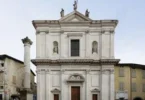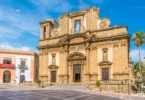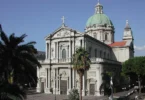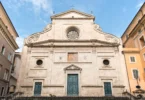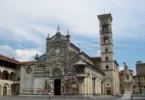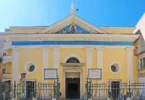Introduction
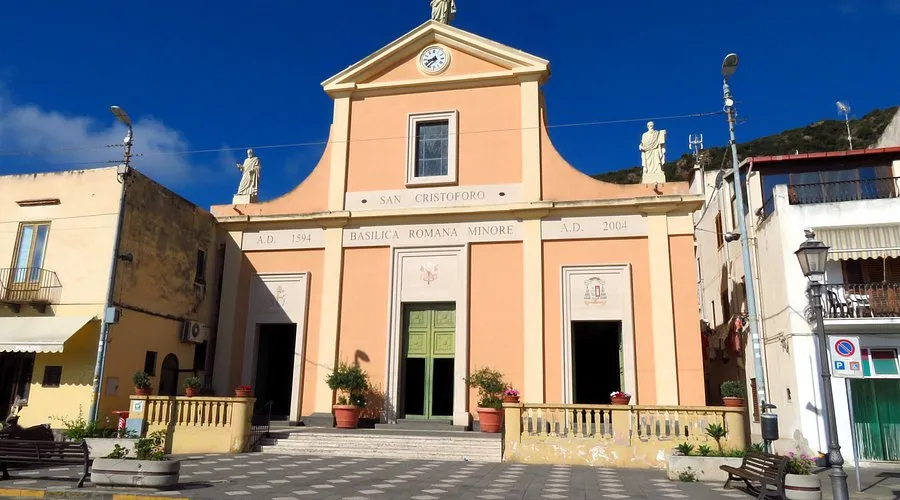
The Basilica Minore di San Cristoforo is the principal place of worship in the hamlet of Canneto, located on the island of Lipari, part of the Aeolian archipelago in Sicily, Italy. Dedicated to Saint Christopher, the patron saint of travelers and the protector of the community, this Roman Catholic church holds the honorary title of a minor basilica, underscoring its religious, historical, and cultural significance. Prominently positioned near the seafront, the basilica serves as a spiritual and communal center for the residents of Canneto and visiting pilgrims. It stands as a testament to the town’s deep-rooted faith and devotion to Saint Christopher, whose intercession has long been invoked by those living in and traveling across the island. With its traditional Sicilian ecclesiastical architecture and vibrant liturgical life, the Basilica of San Cristoforo remains a landmark of devotion and identity for the Lipari community.
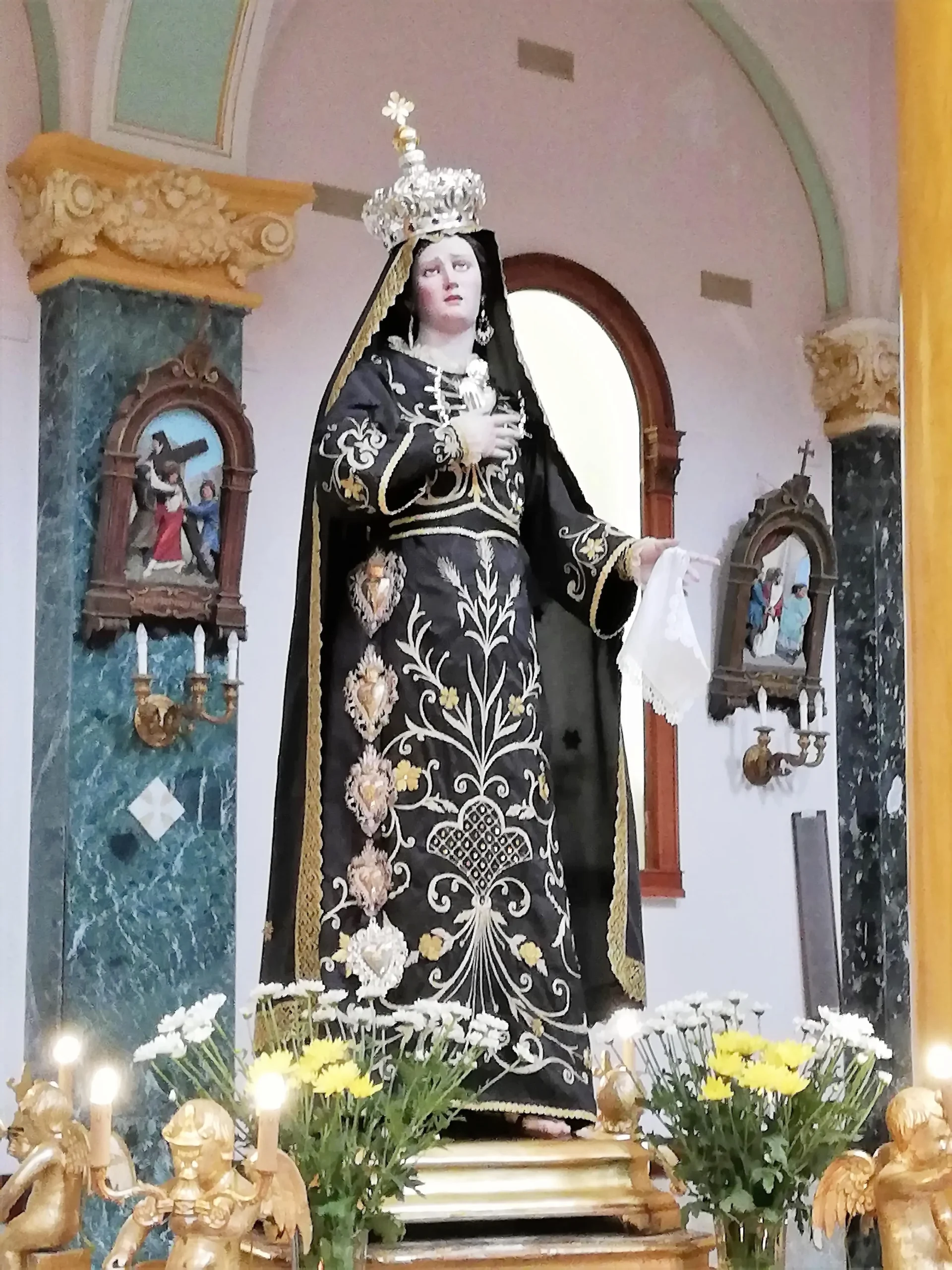
Spanish Era: The Founding of the Church (1596)
The origins of the Basilica Minore di San Cristoforo trace back to the late 16th century, during the Spanish rule over Sicily. The church was initially founded in 1596 through the efforts and vision of Bishop Juan Pedro González de Mendoza, who sought to establish a religious and residential community in a then sparsely populated and vulnerable area. At the time, Canneto was known as Calandra Bay, a remote and exposed coastal area that was frequently targeted by Barbary corsairs and pirates. The construction of a small church here was not only a spiritual undertaking but also a strategic move to encourage settlement and offer protection to the faithful. It became a symbol of resilience and the hope of prosperity for a fledgling community.
Unification Era: Relocation and Expansion (1864–1900s)
As Canneto began to grow, so did the spiritual needs of its inhabitants. The original small church soon became insufficient to accommodate the increasing number of worshippers. In response, the decision was made to relocate and rebuild the church in a more central and suitable location. Construction of the new church structure began in early 1864, and by the early 20th century, the church had taken on its present form. This new place of worship became a central pillar of the community, providing a more spacious and comfortable sanctuary for religious life in Canneto.
Contemporary Era: Renovation and Recognition (1924–Present)
The 20th century ushered in a transformative phase for the Basilica Minore di San Cristoforo, marked by a comprehensive renovation and artistic enhancement of the sacred space. Between 1924 and 1928, the church underwent a complete reconstruction and expansion, shaping its current architectural form and reinforcing its role as a central place of worship in Canneto. Several notable additions followed this initial redevelopment. In 1932, the Chapel of Our Lady of Lourdes was constructed, adding a devotional space of great spiritual significance. By 1950, the central nave had been richly decorated, and in 1955, attention turned to the side aisles, which were similarly embellished. The work continued with the completion and decoration of the choir loft in 1958, further enhancing the liturgical atmosphere of the basilica.
Throughout the 1950s, the church saw the installation of marble wall coverings, ornate chandeliers, and handcrafted wooden pews, all of which contributed to the dignified and welcoming environment that characterizes the interior today. On June 8, 2003, the church was solemnly consecrated in a significant religious ceremony led by Archbishop Giovanni Marra, a milestone that reaffirmed its sacred importance to the community. A year later, in 2004, the church received the distinguished title of Minor Basilica, granted by Pope John Paul II, recognizing its deep spiritual heritage and architectural value. To mark this honor, the facade was redesigned and enhanced, giving the basilica a renewed exterior worthy of its elevated status. In 2006, the church’s exterior was further embellished with three prominent statues: Saint Peter and Saint Paul were installed on either side of the façade, while a statue of Christ the Redeemer was placed at its summit. These statues, blessed in Rome by Pope Benedict XVI, symbolize the basilica’s enduring connection to the broader Catholic Church and serve as spiritual guardians of the faithful.
Architecture of Basilica di San Cristoforo, Canneto, Italy
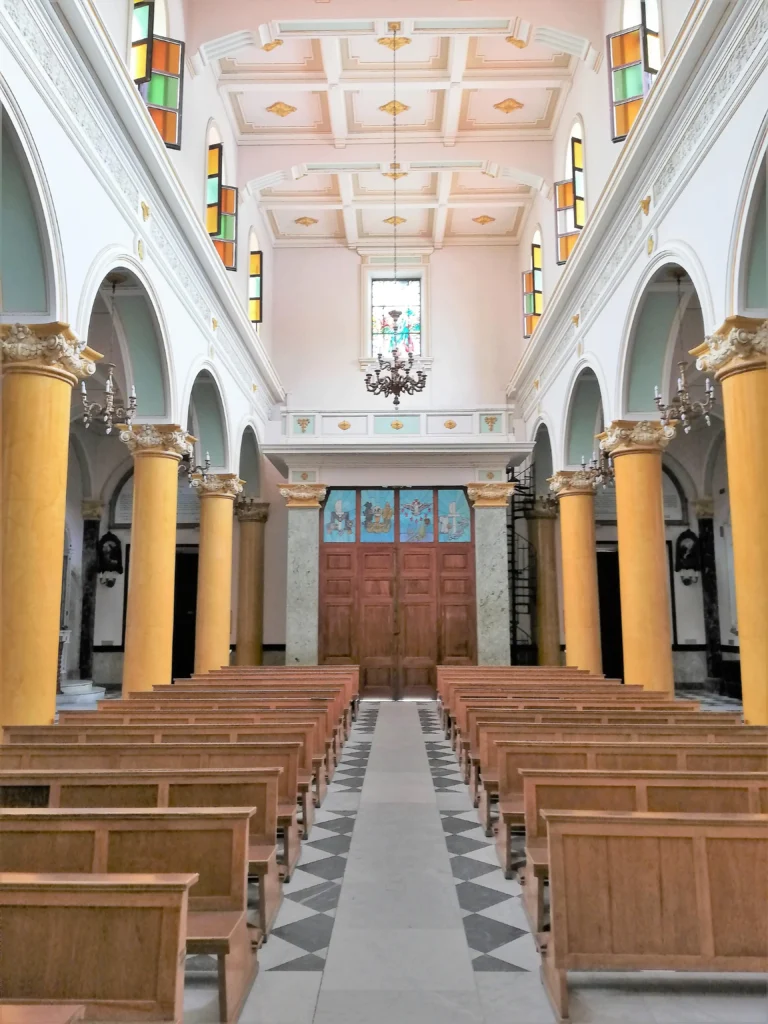
Facade of the Basilica Minore di San Cristoforo
The façade of the Basilica Minore di San Cristoforo in Canneto di Lipari is a striking architectural composition that reflects the church’s long history and spiritual significance. It is designed in two distinct levels, or orders, separated by elegant string courses and connected by volutes that lend a sense of fluidity and classical harmony. The lower level is structured with three sections marked by pilasters, each framing one of the three entrance portals. Above the portals, significant ecclesiastical insignia are displayed: the central portal features the basilica’s coat of arms, the right bears the papal insignia with Pope John Paul II’s motto “Totus Tuus”, and the left showcases the archiepiscopal insignia with a green galero and twenty tassels. A prominent inscription above reads: “SAN CRISTOFORO – AD 1594 – BASILICA ROMANA MINORE – AD 2004”, commemorating the basilica’s founding and its designation as a minor basilica.
The upper level features a large central window that illuminates the nave, flanked by statues of Saints Peter and Paul. Above this is a triangular pediment with a functional clock, and crowning the structure is a statue of Christ the Redeemer, blessed in Rome by Pope Benedict XVI, which adds a powerful spiritual symbol to the church’s external identity. A small, balustraded churchyard leads up to the basilica via three steps, and the adjoining pedestrian area is paved in a distinctive two-tone geometric pattern. Inside, the counter-façade holds two commemorative inscriptions: one marking the church’s elevation to a minor basilica by Pope John Paul II in 2004, and the other granting plenary indulgences as decreed by Pope Benedict XVI in 2006. These elements together present the façade not just as an architectural feature, but as a testament to the basilica’s enduring faith and community heritage.
Interior of the Basilica Minore di San Cristoforo
The interior of the Basilica Minore di San Cristoforo in Canneto di Lipari is structured with a classic basilican layout, consisting of a central nave flanked by two side aisles, each adorned with devotional statues, altars, and commemorative elements that reflect deep-rooted local piety and artistic tradition.
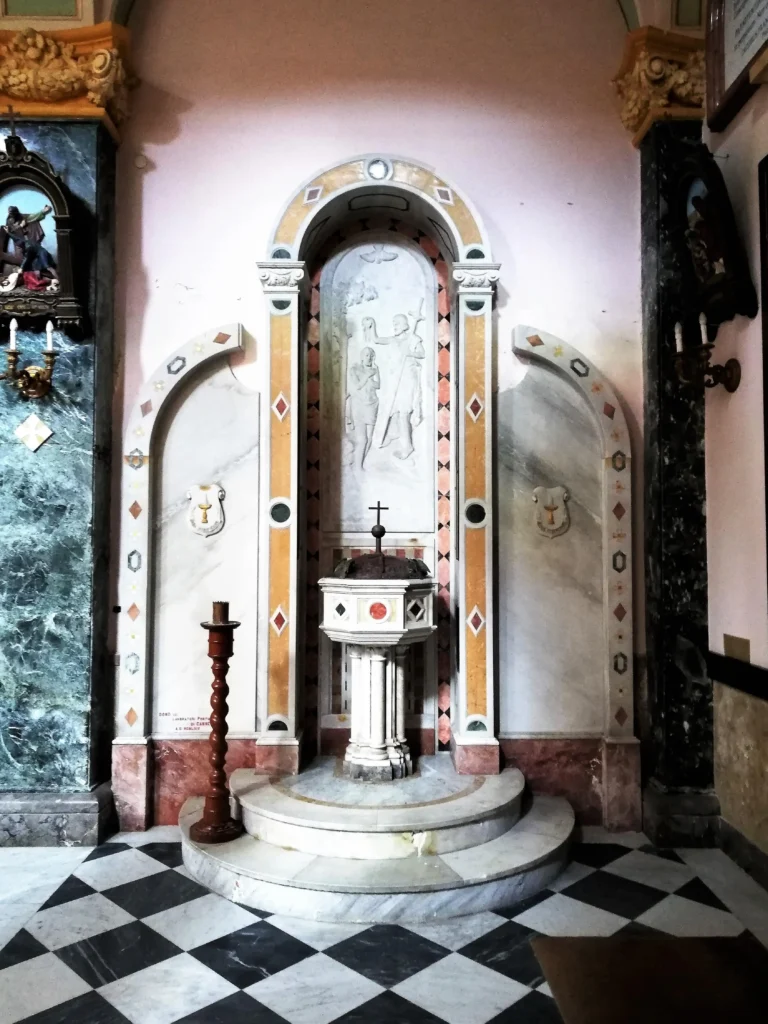
Right Aisle
The right aisle of the Basilica Minore di San Cristoforo is a testament to deep spiritual devotion and artistic refinement. As one moves from the entrance toward the presbytery, each span reveals a carefully curated sacred element that enriches the devotional atmosphere. The first span houses the baptismal font, a finely sculpted marble piece that marks the beginning of Christian life, appropriately positioned near the entrance according to ecclesiastical tradition. In the second span, a niche with the statue of the Immaculate Conception is paired with a confessional, inviting both prayer and the sacrament of reconciliation. The third span honors Saint Anthony of Padua, one of the most beloved saints of the Church, particularly venerated for his intercessory power in finding lost items and for his compelling preaching. The fourth span is dedicated to Saint Onofrio the Anacoreta, a revered hermit saint known for his life of penance and solitude in the desert. The fifth span showcases the Madonna delle Grazie, a title of the Virgin Mary symbolizing her role as a gracious intercessor. The sixth span contains a deeply moving statue of Our Lady of Sorrows, the only example in the basilica of a dressed or cloaked Madonna, reflecting Iberian devotional traditions and lending a unique cultural dimension to the interior. Collectively, these sacred images along the right nave wall not only serve as focal points for personal prayer but also contribute to the overall narrative of faith and reverence that defines the character of this historic church.
Left Aisle
The left aisle of the Basilica Minore di San Cristoforo echoes the devotional rhythm of the right aisle, presenting a harmonious procession of sacred figures and commemorative elements. In the first span, a marble inscription dedicated to Monsignor Gennaro Divola honors the memory and service of a key figure in the church’s history, recognizing his pastoral and spiritual contributions. The second span houses a statue of Saint Rita of Cascia, beloved for her unwavering faith and regarded as the patroness of hopeless and impossible causes—a powerful symbol of perseverance through suffering. In the third span, the statue of Saint Joseph, protector of the Holy Family and model of fatherhood and labor, stands as a quiet but profound presence, offering inspiration to families and workers alike. The fourth span is dedicated to the Madonna della Catena, a Marian figure widely venerated in Southern Italy for her association with freedom, deliverance, and maternal care, particularly among communities once plagued by slavery or hardship. The fifth span features the Sacred Heart of Jesus, a devotion central to Catholic spirituality that underscores Christ’s infinite love and mercy for humanity.
Additionally, the sacristy is accessible from the left aisle, providing a private, functional space where clergy prepare for liturgical celebrations and sacred vestments are kept. Enhancing the overall spiritual setting, the left nave wall is adorned with further inscriptions and artistic embellishments, reinforcing the sacred atmosphere that permeates the basilica’s interior.
Presbytery and High Altar
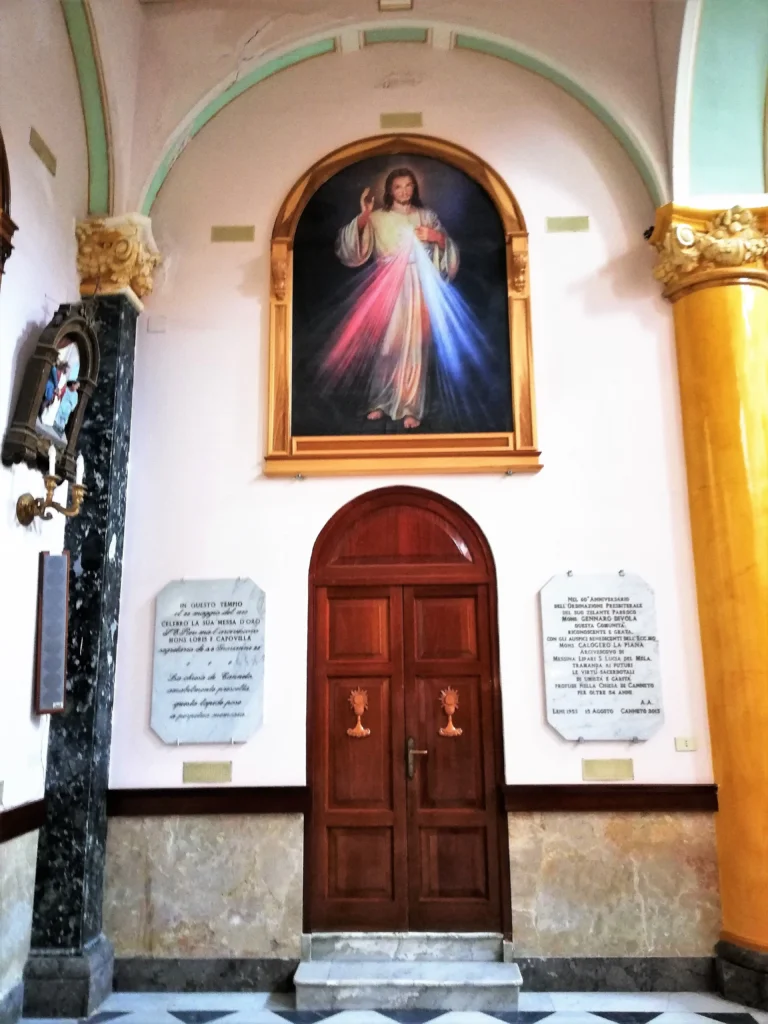
The presbytery serves as the spiritual and liturgical focal point of the Basilica Minore di San Cristoforo, drawing the faithful into a deeper sense of reverence and devotion. To the right of the apse is the Lourdes Chapel, a serene sanctuary space inspired by the Marian apparitions at Lourdes, France. This chapel fosters a global connection to one of the most beloved devotions to the Virgin Mary, offering a place for personal prayer and intercession.
The high altar, oriented versus apsidem (toward the apse), stands as the centerpiece of the sanctuary. It features a temple-like elevation that rises above the mensa (altar table), creating a vertical emphasis that naturally draws the eye upward and enhances the solemnity of the liturgical space. Within the central niche of this structure rests a 19th-century wooden statue of Saint Christopher, the patron of the basilica. Depicted in his traditional form—bearing the Christ Child across the river—the statue embodies the themes of protection, strength, and faithful service. For the people of Canneto and the wider Lipari community, Saint Christopher is a powerful spiritual figure and guardian, especially for travelers and seafarers. Together, the architectural design and devotional elements of the presbytery and high altar form a rich tableau of Catholic identity, blending sacred tradition with local reverence in a space meant to inspire both awe and intimacy in worship.
Feast Day
Feast Day : 25th July
The feast day of San Cristoforo (Saint Christopher), the patron saint of the Basilica di San Cristoforo in Canneto di Lipari, is celebrated on July 25th each year. This date aligns with the traditional feast day of Saint Christopher in the Christian liturgical calendar. The celebration includes religious ceremonies and various festive activities, such as processions, music, fireworks, and community gatherings, honoring Saint Christopher, the protector of travelers.
Church Mass Timing
Monday to Saturday : 6:30 PM.
Sunday : 11:00 AM , 6.30 PM
Church Opening Time:
Daily : Open 24 Hours
Contact Info
Address :
Basilica di San Cristoforo
98050 Canneto, Metropolitan City of Messina, Italy
Phone : +39 090 981 1495
Accommodations
Connectivities
Airway
Basilica di San Cristoforo, Canneto, Italy, to Reggio Calabria Airport (REG), distance between 4 hr 6 min (115.8 km) via Milazzo – Vulcano.
Railway
Basilica di San Cristoforo, Canneto, Italy, to Milazzo Railway Station, distance between 2 hr 34 min (50.3 km) via Milazzo – Vulcano.

